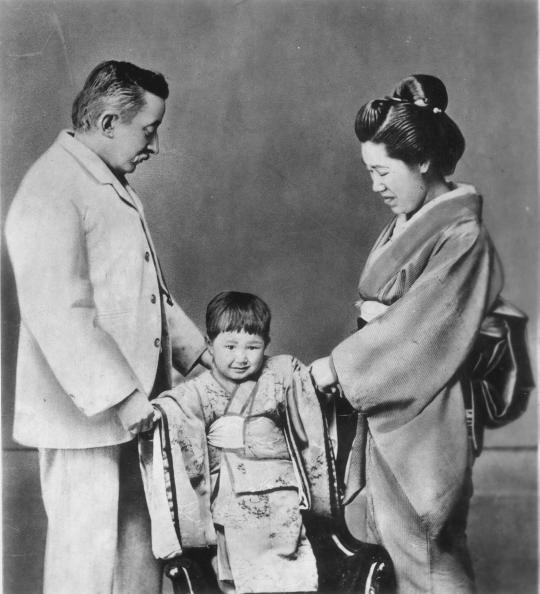Lafcadio Hearn (1850-1904) was a most remarkable writer, at home in a range of genres. While a journalist in the US, he wrote sensational crime stories and lurid accounts of the grotesque, ranging from macabre incidents to graphic descriptions of a slaughterhouse. Later in Japan he showed himself to be adept as a folklorist as well as a writer of travel pieces, religious explications and detailed studies of insects. He was also a notable letter writer. One of the facets of his writing for which he has won particular praise is as a reteller of tales, particularly the ghost stories for which he won fame with the collection in Kwaidan (1903).
Hearn’s fourteen years in Japan saw him reside for different periods in Yokohama, Matsue, Kumamoto, Kobe and Tokyo. He never lived in Kyoto, though he visited on more than one occasion. He came in 1892 for the first time and was pleased by the broad streets with their astonishing array of temples, shrines, silk works, kilns, gardens and parks. He wrote of wanting to plunge into study of Buddhism, but then the enchantment wears off, perhaps because of temple-satiation, because of the rain, or perhaps the incipient signs of Westernisation such as the sight of a church spire at Doshisha. Only later does he decide it’s because he misses the ancient ways and untouched customs of his beloved Matsue where the ancient gods live on in the hearts of the common folk.
Later Hearn was to write of his visit in 1895 for the celebrations for the 1100th anniversary of the founding of the city and the opening of the newly built Heian Jingu. Not surprisingly, several of the stories he loved to retell are set in Kyoto, and these are identifiable in A Lafcadio Hearn Companion by Robert L. Gale. They include: ‘Kimiko’ (p.132); ‘Common Sense’ (p.134); ‘Story of a Fly’ (p.135); ‘The Reconciliation’ (p.200); ‘The Screen Maiden’ (p.200); and ‘The Sympathy of Benten’ (p.201). In addition, ‘Yuko: A Reminisce’ (p.177) reaches its dramatic highpoint in Kyoto, though much of the story takes place elsewhere. In our ongoing series of Kyoto-related writing, we plan to cover all of these.
*************
For coverage of three of Hearn’s Kyoto stories, see here for ‘Common Sense’, here for ‘The Sympathy of Benten’, and here for ‘Screen Maiden’.
For Hearn on Izumo no Okuni, whose statue stands at Shijo Bridge, see here. For Hearn on art and shadows, here, on Higashi Honganji here, on Pontocho here, and for his visit to Kyoto for the opening of Heian Jingu in 1895 click here.

